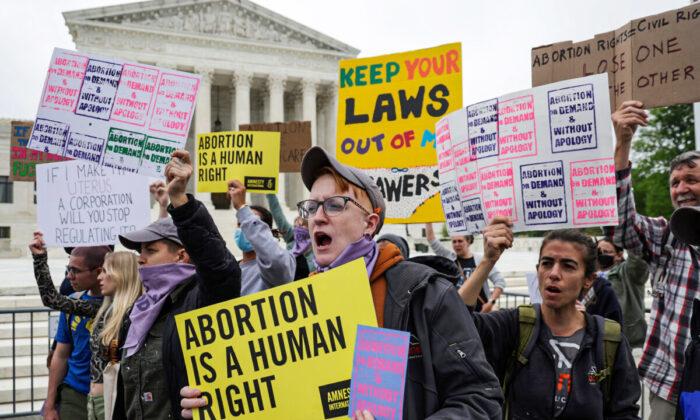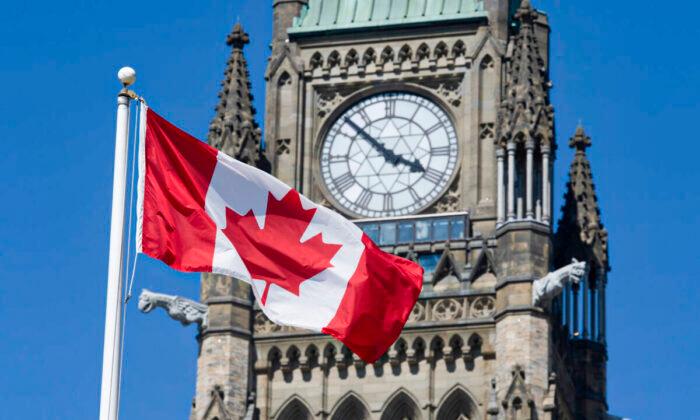Commentary
At the end of January, a rather smugly proud Gov. Gavin Newsom of California and a feisty Mayor Bill de Blasio of New York appeared on U.S. national news on the same night, the former to announce free “guaranteed health care for all Californians” and the latter, free “universal health care” to all New Yorkers.
The United States is talking about trying Canadian-style socialized medicine.
I’ve been a fairly contented user of Canadian socialized medicine my entire adult life, and I know a lot of good people in the system. But I’m also a public critic of it, due to its expense, delays, and limitations, but especially because there’s simply no moral justification for the forced socialization and policing of health care in a free society.
Ideologically speaking, no socialized medicine scheme can succeed for long, because the very principles and deceptions by which it is justified lead to its downfall. Canadian socialized medicine is near the end of a long process of consuming itself both ideologically and financially. So, in what follows, I offer a few warnings to our U.S. friends.
Lies About ‘Free’ Health ‘Insurance’
When it comes to government-controlled, single-payer health care, the word “free” is an illusion. So is the word “insurance.” Nothing is free—although it may be prepaid for you by someone else. The province of Ontario, where I live, has an “Ontario Health Insurance Plan” (OHIP). It’s a well-meaning Ponzi, or “pay-go,” scheme, as economists say, because there is no insurance, and never has been. Money is simply taxed from mostly younger working people and doled out for the health care of mostly older sick people. In Ontario, 10 percent of the citizenry (mostly seniors) consumes 77 percent of all health care.Socialized Medicine Is Very Expensive
Canada’s state-controlled system is per capita among the most expensive in the world ($6,839 for every citizen in 2018). But it rarely gets a B from international agencies ranking national health care systems. A 2017 Commonwealth Fund study of 72 metrics of health care in 11 nations ranked Canada third from the bottom. The United States ranked last, which is an irony, because the United States has the best medicine and medical science in the world, but not the best medical delivery system.A further irony, when comparing medical spending, is that there is no particular connection between national health care spending and the health of citizens. Many countries, such as Japan, spend as little as half of what Canada spends (and a third of what the United States spends), but their citizens are no less healthy, and often more so.
Canada and the United States each spend about 7 percent of GDP on public health care. The rest of Canada’s roughly 11 percent total, and the United States’ 17 percent total, is private. Canada’s program is publicly administered, but privately delivered under strict state controls. The difference in the totals is because American citizens are still free to spend as much of their own money as they wish on additional private health care and insurance, whereas Canadians aren’t. Individual doctors and medical institutions in many provinces of Canada are subject to prosecution and serious fines for providing private care in competition with the public system. You could say Canadians are health care prisoners.
Canada’s Experience
Canada formalized its socialized health care program with the Canada Health Care Act of 1984, which insisted on provincial compliance with certain “principles” of the Act, such as universality and accessibility. The federal government then offered massive cost-sharing subsidies—a form of fiscal bribery—to all provinces in exchange for coast-to-coast compliance with the principles. Provinces found in breach have been docked millions of dollars.The act made Canada, along with North Korea and Cuba, one of the few countries in the history of the world to outlaw private medical care (though North Korea and Cuba have recently dropped the ban). Ontario can issue fines of up to $25,000 to individuals and hospitals found guilty of queue-jumping (although, as I shall point out, there is lots of that). This calls for a lot of inspectors and surveillance.
Medical Police
Canada’s once-free physicians soon realized their entire profession was going to be overseen by—there’s no other word for it—medical police. There would be strict state control and scrutiny of fees, fines for contraventions of the act, and queries from government inspectors about the “reasonableness” of additional treatments or referrals to specialists.My own general practitioner (GP), a good and caring man, has remarked to me often, when I inquire about possibly being allowed a certain additional treatment, “Well, I don’t suppose that would be an abuse of the system.” He means that, in my case, he’s decided that it’s justifiable to spend scarce public money on me (and that he'll be able to defend his decision if questioned by the medical police). So you see, he’s not just my doctor. He’s my medical master and gatekeeper.
eSnooping
All physicians in Canada used to swear on the Hippocratic Oath to maintain strict physician–patient confidentiality. But administratively speaking, that has evaporated. Poof! From the start of Canada’s socialized system, any citizen’s private medical file could be seized and reviewed by a medical officer of the state—perhaps your neighbor down the street? They have the right to open your file and inspect the private details of your reflux, your cancer, your hemorrhoids, your gall-bladder surgery, your erectile dysfunction, whatever.But it gets worse. Now we have eSnooping. With recently updated electronic patient-record systems, health inspectors can now do all their peeking into your once-private medical history electronically. To reflect a little on such unlimited invasion of intimate privacy by a government official is to feel a slow burn.
Canary in the Mine
Canada is the canary in the mine for the United States’ socialized medical future. So here’s what can be expected. Socialized medicine is in competition for public funding with all other government services, such as roads, education, culture, policing, and so on. When it began in Ontario in 1968, the OHIP program accounted for about 25 percent of all expenditures.There were lots of warnings from skeptics that triage of patients and rationing of scarce resources would soon begin, and government would be unable to control spending due to unlimited demand from patients and gaming of the system by doctors, nurses, specialists, technicians, medical equipment suppliers, and drug companies. And because Canada had turned the illusory notion of free medical care into a sacred “right,” no one would dare limit it. Whenever they try, as a former premier of Alberta soon found out, “everyone’s hair lights on fire.”
Crowding Out in Socialized Medicine
By 2017, the cost for socialized medicine in Ontario had risen to 44 percent of all government expenditures, and it’s heading straight for 50 percent. In a disturbing report on health care spending issued in 2012, Don Drummond, chief economist of the Toronto-Dominion Bank, warned, “Things will only get worse as health care eats up every other public service, like an insatiable Pac Man,” and that it would rise to 80 percent by 2030.Critics thought he was exaggerating. But in terms of a province’s “own-source revenue” (total revenue, minus federal subsidies and debt repayment), many provinces of Canada are already very close to spending 80 percent of their own revenue on health care. As U.S. political satirist P.J. O‘Rourke warned long ago: “If you think health care is expensive now, just wait ’til it’s ’free!' ”
Long Waits
Dr. Brian Day, a former president of the Canadian Medical Association, warned in a New York Times interview in 2006 that “[Canada] is a country in which dogs can get a hip replacement in under a week and in which humans can wait two or three years.”Vancouver’s Fraser Institute, a highly respected think tank, published an annual survey of 12 medical specialties in 2018. It revealed that, on average, specialist physicians report a median wait time for medically necessary treatments of 19.8 weeks from referral by a GP to receipt of treatment.
The wait from first consultation to orthopedic surgery is the longest, at 39 weeks—10 months—and from diagnosis to the start of oncology treatment, 3.8 weeks. For scans, it’s 4.3 weeks for a CT scan, 10.6 weeks for an MRI scan, and 3.9 weeks for an ordinary ultrasound. The institute reports that, typically, more than a million Canadians are wait-listed for medically necessary treatments.
Waiting for care is so common that, in 2005, Canada’s own Supreme Court publicly warned the nation that “access to a wait list is not the same as access to health care,” and that in some serious cases—which are on the record—“patients die as a result of waiting for public health care.” Citizens die because the government makes them wait for health care. What kind of country admits such a thing without shame and blushing? Toronto’s mayor describes the sad spectacle of patients languishing in the corridors of overcrowded hospitals, as “hallway medicine.”
A Multi-Tiered System
Socialized medical systems are never single-tier, as promised, or even two-tiered (that publicly dreaded possibility). They are, in fact, and inevitably, multi-tiered. First, there are several triage tiers—tiers within tiers—where patients wait differing lengths of time, according to the severity of their illness.Then, there are the professionals, or even ordinary citizens, who just happen to know someone working in the system—the big-name athletes; the big business people; the media stars; the politicians; the police; the military brass; and, not surprisingly, doctors and nurses themselves, who get immediate care from their own hospitals. Finally, there’s anyone who lives close to the best hospitals and doctors rather than hundreds of miles away. Unionized workmen get treatment for injuries in a week because the government doesn’t want to get stuck with their disability payments, while an ordinary citizen may have to wait for months.
When I first began investigating the questions of medical tiers in Canada, I discovered that many of Canada’s members of Parliament in Ottawa were walking down the street for same-day medical care at a military hospital intended for soldiers only. That was halted once the story broke. And I almost forgot: Statistics Canada reports a huge tier of almost 2 million Canadian citizens who complain they have no doctor because Canada is short on doctors.
Medical Tourism Booming
There’s another very large Canadian tier engaged in medical tourism. Thousands of Canadians—64,000 in 2018 that we know of, and surely thousands more who aren’t telling—travel a long way to countries such as the United States, Costa Rica, the Cayman Islands, Cuba, and South Africa for services that are unavailable in Canada. People in this tier spend close to a billion dollars per year in other countries, either because they are forbidden to spend it for private care in Canada, or because the services, technology, or specialists are not available here, or the pain and the wait are just too long.Most shocking of all is that many of the people engaged in these expensive medical jaunts are the very politicians who write laws forbidding Canadians to spend their own money on private medical treatment. Among them are two former prime ministers of Canada (Joe Clark and Jean Chretien), two provincial premiers (Danny Williams and Robert Bourassa), and we suspect other government ministers and elected officials who aren’t telling. These people want private health care for themselves, but not for the voters.
Private Clinics
Most of Canada’s provinces have below-the-radar private clinics that operate in contravention of the Canada Health Act. Medical police pursue them for years to shut them down. Lawsuits follow. Some are shut down. New ones open up. More medical police. And around it goes.The same Dr. Brian Day mentioned above has already spent $2 million in court fighting for the survival of his private medical clinic in Vancouver. Even though, when citizens pay his clinic for care, it reduces the government’s expenditures, the government is trying to shut him down for ideological reasons. They argue that money in your pocket shouldn’t determine the quality of care you get, even though the same government doesn’t mind if money in your pocket determines the kind of condo, or car, or bicycle, or food you buy. And they go silent when informed that there would be a lot more money in everyone’s pockets if the government weren’t taking so much of it in the first place.
The most recent private initiative in Canada was to open private hospitals on Indian reserves, where Canada’s laws against private medicine don’t apply. Health Canada reacted sharply: Such private hospitals might be allowed, but only if they cater solely to foreigners.
Foreigners Can Pay Cash for Care
If you’re a foreigner, and have cash—money from outside Canada’s socialized system—immediate health care is available to you for, say, a surgical procedure today, for which a tax-paying Canadian may have to wait a very long time. So let’s see now: A full citizen who has been paying taxes for an entire working life for medical care is forbidden by law to use personal funds to purchase the same surgery offered today to a foreigner for cash? That seems very wrong.Physicians Gaming the System
And, of course, many physicians learn to game the system to keep their earnings up. Good, honest folk, for sure. But only human. Lots of studies have revealed that in any government-controlled health system with scarce resources, physicians may be found engaging in “time shuffling,” “upgrading,” “injury enlargement,” “ping-ponging,” “service splitting,” “phantom treatment,” “assembly-line treatment,” and more. I didn’t invent these terms. They are easy to find in the fevered calculations of health economists.Veterinary Medicine for Humans
Surely, the most damning moral fact about any socialized medical system, however, is that it converts human medicine into veterinary medicine for humans. Think about it. The machinery, medicines, and procedures used to treat your pet dog or cat are the same as those used to treat you.In a free and open society, humans have a say as to how much and what kind of treatment they want to purchase, or to insure themselves for, or to refuse. But animals don’t: Animals have medical masters. Meanwhile, in a closed society with a socialized medical regime, the quality, availability, and timing of medical services that citizens are permitted to receive are dictated by their master, the state. It follows that socialized medicine is veterinary medicine for humans.
Is this what Americans want?
William Gairdner is an author who lives near Toronto. His latest book is “The Great Divide: Why Liberals and Conservatives Will Never, Ever Agree” (2015). His website is WilliamGairdner.ca
Views expressed in this article are opinions of the author and do not necessarily reflect the views of The Epoch Times.





